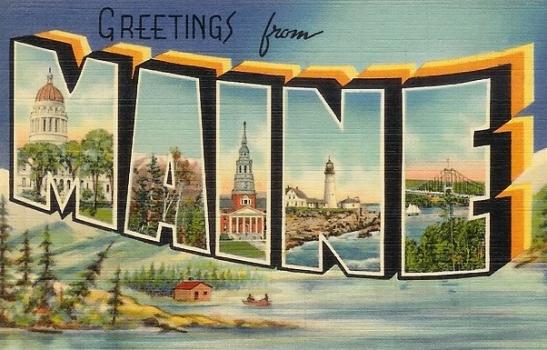
Overview
The state of Maine is home to around 50 salaried fashion designers, dozens of retail shops, and a number of malls that sell the latest fashions. Although trendy clothing is easy to find here, Maine’s style is less about trend and more about comfort. Flannel shirts, khaki shorts and pants, Polo shirts, and jeans are staples here as well as “Bean” boots. If you’re not familiar with Bean boots, think L.L. Bean—which happens to be headquartered in Freeport.
Maine’s top places to shop are downtown Portland, where stores carry both local and international designer apparel; Maine Mall of South Portland, home of more than 140 stores; Route one in Kittery, home to more than 50 name brand outlet stores, and of course, L.L. Bean. The variety of shopping venues here make it easy to perfect your look and they also offer plenty of opportunities for fashion designers and fashion merchandisers. Portland, Lewiston, and Bangor offer the most opportunities, but you can still find opportunities at independent shops and design studios in smaller cities.
Career Opportunities & Employers in Maine:
As mentioned earlier, fashion designers can find work in textile design, technical production, apparel design, pattern making, and even retail sales. Fashion merchandisers can also find work in retail sales as well as buying, merchandising, promotions, and consulting. They also work in auxiliary positions as costumers, mystery shoppers, personal shoppers, stylists, and fashion directors.
If you’re hunting for a job in Maine, try the major cities first to see what they have to offer. Chances are, they’ll have a greater variety of positions than a small town. Try Portland, Lewiston, Bangor, South Portland, Auburn, and Biddeford.
Maine Fashion Schools & Programs:
If you’re interested in a career in fashion design or fashion merchandising, you can get started by enrolling in an accredited fashion design or fashion merchandising degree program. Most employers prefer a two- or four-year degree from an accredited college. The National Association of Schools of Art and Design accredits approximately 300 postsecondary institutions with programs in art and design. These schools typically award degrees in both fashion design and fashion merchandising.
We were unable to find any fashion degree programs in Maine, but one school does offer non-degree courses such as fiber and fashion and a fashion illustration degree. Maine College of Art in Portland (MECA) offers these programs as well as an innovative “foundation” program that may offer the opportunity to explore several areas of fashion. MECA also hosts some of the most talked about fashion events in the state.
If you want to open your own store or start your own line, wherever you decide to study, inquire about combining your fashion design or fashion merchandising degree with a business or marketing degree. Keep in mind that most universities offer marketing and business degrees, while most art and design schools do not. You can take business courses at another school while completing your fashion program or you can wait until you have completed your degree to enroll in a full-time business or marketing degree program.
For more information about the fashion design and fashion merchandising industries, visit the Bureau of Labor Statistics at Bls.gov.
Employment and Salary Trends for Maine:
Maine fashion designers may work in textile design, technical production, apparel design, pattern making, and even retail sales. The 50 salaried fashion designers here average around $79,620 per year. This is one of the nation’s highest salaries for fashion designers. As of May 2008, the mean annual wage for fashion designers nationwide was $61,160. The lowest paid fashion designers earned an average annual salary of $32,150 and the highest paid fashion designers earned $124,780 per year. Because many fashion designers are self-employed, salaries may vary greatly. It’s not unusual for a top fashion designer to earn millions per year.
Employment and salary figures for fashion merchandisers have not been reported by the Bureau of Labor Statistics, but a significant part of the job involves working with window and store displays. More than 400 merchandise displayers live in Maine, which is a huge jump from only 130 in 2006.
Overall, employment in the fashion industry is expected to grow by one percent for the 2008-2018 decade. Sewing and cutting jobs may decline as more and more designers and brands choose manufacturing companies overseas. However, employment of fashion designers is stable because many firms prefer to keep design work in house.
| Number of jobs | Mean hourly pay | Mean annual pay | Job Outlook | |
|---|---|---|---|---|
| Fashion Job |